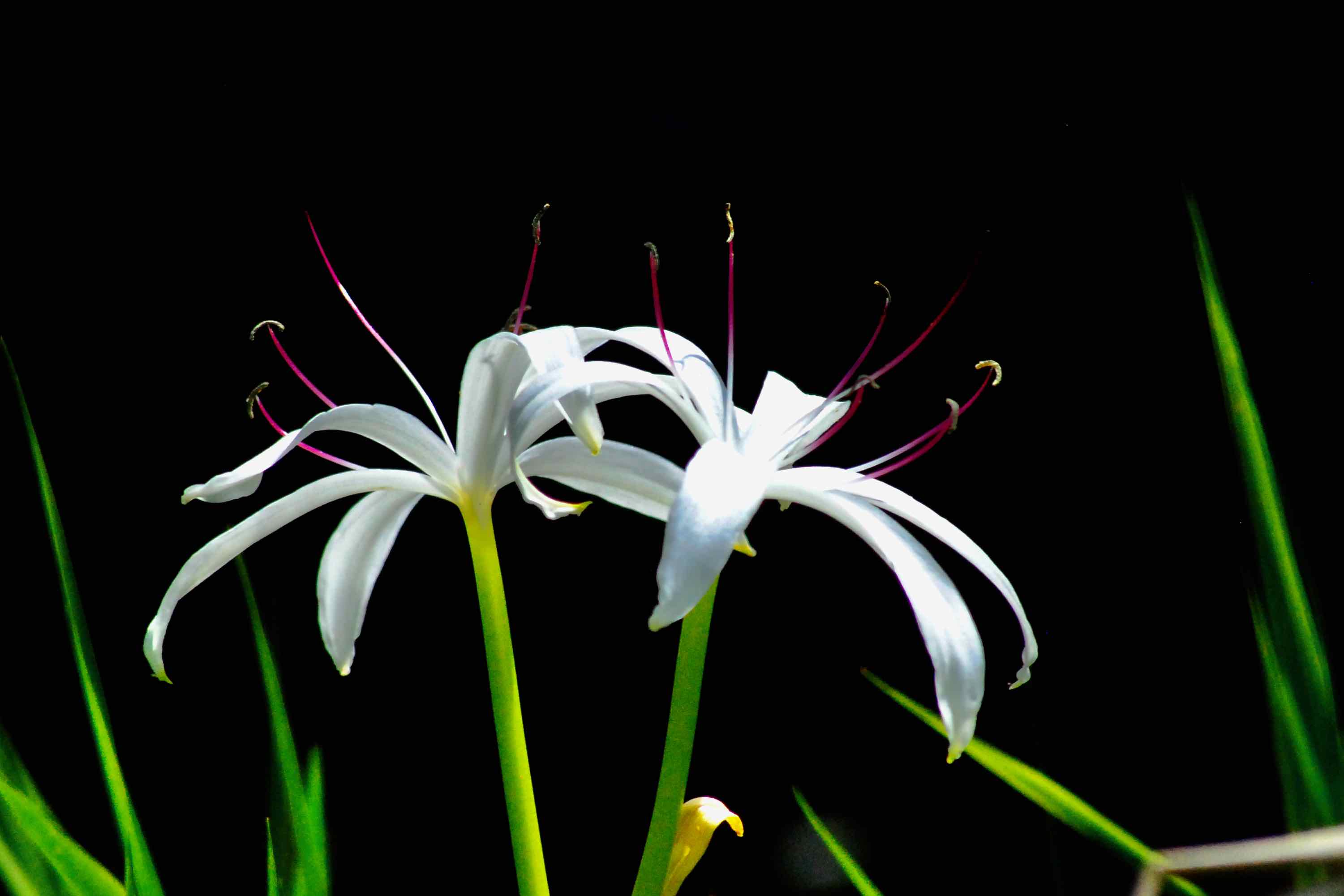
The Swamp Lily, also known as the Crinum americanum, is a stunning aquatic plant that is native to the southeastern United States. It is known for its unique beauty and ability to thrive in swampy and marshy areas. With its long, slender leaves and exquisite white or pink flowers, the Swamp Lily is a remarkable sight to behold.
In this article, we will uncover 16 astonishing facts about the Swamp Lily that will leave you fascinated by this incredible plant. From its fascinating history to its medicinal uses and ecological importance, the Swamp Lily proves to be more than just a visually appealing flower. So, let’s dive in and explore the extraordinary world of the Swamp Lily.
Key Takeaways:
- Swamp Lily, a stunning plant native to the Southeastern US, blooms all summer, attracts wildlife, and has cultural significance. It’s easy to grow and creates a tropical vibe in gardens.
- Swamp Lily’s long, arching leaves give it a tropical look and make it a low-maintenance, long-lived plant. Conservation efforts are crucial to protect this beautiful species for future generations.
The Elegant Beauty of Swamp Lily
Swamp Lily, also known as Crinum americanum, is a stunning flowering plant that belongs to the Amaryllis family. With its graceful white flowers and long, slender leaves, this plant adds a touch of elegance to any wetland or garden.
Native to the Southeastern United States
Swamp Lily is native to the southeastern region of the United States, where it thrives in the swampy and marshy areas of Florida, Georgia, and Louisiana. It is also found in other parts of the southeastern coastal plain.
Versatile and Hardy
Swamp Lily is a hardy plant that can tolerate a wide range of soil conditions, including sandy, loamy, and clay soils. It is also adaptable to different light conditions, from full sun to partial shade.
Spectacular Blooms
One of the most captivating features of the Swamp Lily is its spectacular blooms. The flowers are large, trumpet-shaped, and delicately fragrant, attracting pollinators such as bees and butterflies.
Blooms All Summer Long
Swamp Lily is known for its long flowering period. Once it starts blooming, it continues to produce flowers throughout the entire summer, providing a continuous display of beauty.
Water-Loving Plant
As its name suggests, Swamp Lily thrives in moist and wet environments. It can be found along the edges of swamps, marshes, ponds, and other water bodies. It is an excellent choice for water gardens and rain gardens.
Attracts Wildlife
The Swamp Lily is not only visually appealing, but it also attracts a variety of wildlife. The nectar-rich flowers entice pollinators, while the plant itself provides shelter for small animals and insects.
Medicinal Uses
Throughout history, the Swamp Lily has been used for its medicinal properties. Native Americans used different parts of the plant to treat various ailments, including digestive issues, skin irritations, and even snakebites.
Easy to Grow
Whether you are a seasoned gardener or a beginner, Swamp Lily is relatively easy to grow. With proper care, it can flourish and become a stunning focal point in your garden.
Tropical Look
The long, arching leaves of Swamp Lily give it a tropical look, reminiscent of exotic vacation destinations. Incorporating this plant into your garden can transport you to a lush, tropical paradise.
Low Maintenance
Swamp Lily is a low-maintenance plant that requires minimal care once established. It is resistant to most pests and diseases, making it an ideal choice for those who want a hassle-free gardening experience.
Food Source for Wildlife
The bulbs and seeds of the Swamp Lily serve as a valuable food source for wildlife. Birds and small mammals often feast on the nutritious seeds, helping to spread the plant and support biodiversity.
Cultural Significance
Swamp Lily holds cultural significance in some indigenous communities. It is considered a symbol of purity, beauty, and resilience, and is often used in traditional ceremonies and rituals.
Wildlife Habitat Creation
By planting Swamp Lily in water gardens or wetland areas, you can create a habitat for numerous wildlife species. Frogs, turtles, and dragonflies are just a few of the creatures that will benefit from the presence of this plant.
Long-Lived Plants
Swamp Lily is a perennial plant, meaning it can live for many years with proper care. It can continue to produce beautiful blooms year after year, enhancing the beauty of your outdoor space.
Conservation Efforts
Due to habitat loss and other environmental factors, some species of Swamp Lily are considered threatened or endangered. Conservation efforts are being made to protect and preserve these beautiful plants for future generations to enjoy.
Conclusion
In conclusion, the Swamp Lily is an astonishing plant that offers numerous unique and fascinating characteristics. From its beautiful petals that resemble delicate lilies to its ability to flourish in wetlands and swamps, this plant is truly a marvel of nature. With its medicinal properties and ecological significance, the Swamp Lily plays a crucial role in the ecosystem, providing shelter and food for various types of wildlife.If you ever come across a Swamp Lily in its natural habitat, take a moment to appreciate its intricate beauty and remarkable adaptability. Whether it’s the vibrant colors, the enchanting fragrance, or the interesting fact that it can even grow underwater, the Swamp Lily is sure to capture your attention and leave you awe-inspired.So, next time you find yourself exploring a wetland or swamp area, keep an eye out for the Swamp Lily. Its astonishing features and ecological importance make it a plant worth admiring and protecting.
FAQs
Q: What are some other names for the Swamp Lily?
A: The Swamp Lily is also known as the Crinum americanum, Seven Sisters, Southern Swamp Lily, and Southern Crinum Lily.
Q: Where can Swamp Lilies be found?
A: Swamp Lilies are native to the Southeastern United States and can primarily be found in wetlands, swamps, and along the banks of rivers and streams.
Q: Are Swamp Lilies easy to grow in a garden setting?
A: Yes, Swamp Lilies can be grown in a garden setting, as long as they receive adequate moisture and are planted in well-drained soil. They require full to partial sunlight for optimal growth.
Q: Do Swamp Lilies have any medicinal properties?
A: Yes, the bulbs of the Swamp Lily have been used in traditional medicine to treat conditions such as fever, snakebites, and bronchitis. However, it is important to consult with a healthcare professional before using any plant for medicinal purposes.
Q: Are Swamp Lilies endangered?
A: Swamp Lilies are not currently listed as endangered. However, due to habitat loss and degradation, it is important to conserve wetlands and protect the ecosystems where these plants thrive.
Swamp Lily's enchanting beauty and resilience captivate nature enthusiasts. If you enjoyed learning about this magnificent plant, consider exploring the intriguing world of Crinum Lily. Its unique adaptations and cultural significance make for a fascinating read.
Was this page helpful?
Our commitment to delivering trustworthy and engaging content is at the heart of what we do. Each fact on our site is contributed by real users like you, bringing a wealth of diverse insights and information. To ensure the highest standards of accuracy and reliability, our dedicated editors meticulously review each submission. This process guarantees that the facts we share are not only fascinating but also credible. Trust in our commitment to quality and authenticity as you explore and learn with us.


